#céres
Text
Den 6.
Dnešní den zahajuji ještě za tmy na střeše jógou a meditací. Ze soustředění mě po chvíli vytrhuje slabý hlásek, který velmi zdvořile praví:”Mamko, promiň, nechci tě rušit, ale… mohla bys nám už udělat něco k jídlu? My máme hrozný hlad.” Honza je samozřejmě celou dobu s dětmi. Je ale fakt, že jsem prve slíbila, že snídani udělám, až přijdu. Tak si Heda pro mě došla. Na dnešek jsem se dobře vyspala, takže na ně vyzraju už zkraje - kdybych jim dala k snídani omeletu, hodí mi ji na hlavu, že vajíčka jíme přece pořáááád. Takže já servíruju vajíčkovo-šunkovou pizzu! Nutností je nakrájet ji na trojúhelníčky. Máma 1: děti 0. Dopolední kolečko Honzovy práce a mého balení a na jedenáctou vyrážíme do Loro Parku! Máme ho doslova za rohem, takže Jindrovi jsme zvířata slíbili co nejdřív, ať nás s tím pak už neotravuje kdykoliv jdeme okolo. Loro Park měl být původně papouščí zoo, ale nyní se chlubí tím, že je nejskvělejší zoo na světě - s kosatkami, bílými tygry, medůzami a desítkami zájezdních autobusů přes branami. Heduška si vybere plyšáka hned v prvním obchodě (chytře to mají tématicky rozdělené - po pavilonu tučňáků následuje obchůdek plný.. tramtadadáá… plyšových tučňáků!) a už míříme na show s kosatkami. Usazujeme se do vyšších řad, kde by neměla hrozit ocasní sprcha a dvacet minut jedeme slovní výměnu “kdy už to bude!?! Už za chvíli Jindro. Kdy už to budeee? Už za chvíli Hedunko.” Tak to začne. Heduška se po každém zatleskání ptá, jestli už je to konec a kdy už budou skákat do vzduchu. Na informační tabuli promítají informace o kosatkách a velryby poslušně ukazují bříška a ocasní ploutve. Když si to člověk zasadí do kontextu, kolik úsilí a času tohle cvičení stojí (a samozřejmě se jedná o velryby, které byly touto zoo zachráněné, ve volné přírodě by žít nemohly atd. atd.), tak to je třeba ocenit. Bez tohohle mentálního úsilí je to ale bohužel jen nuda. Vydržíme 15 minut a mizíme. Obě děti mají hlad, ale před námi je jen kiosek s ledovou tříští. Zrada! Já už bych snad i povolila, jen aby mi daly pokoj, ale pro naši rodičovskou dyádu trochu nezvykle udává nyní hranici Honza (teď dostanu céres), a prostě tříšť bude, až se najíte. Děti jsou trochu vykulené, ale frflajíc se nechají dovléct tam, kde prodávají i jídlo a milostivě do sebe nasoukají stripsy a hranolky. Tak teď už ty tříště joo? Vše je zalité sluncem asi dvě a půl minuty, než na sebe Jindra vyklopí celou půllitrovou várku. Takže do naha a co teď s ním. Samozřejmě, když nejdeme k moři, neberu s sebou věci na převlečení, na co taky. Jindru balím do svého šátku, a jsem pyšná na svoji kreativitu. Jemu se to ale tolik nepozdává a za chvíli mění za Honzovu košili. Ještě zastávka na hřišti, a přes medúzy hledáme obchod pro Jindrového plyšáka. Všechny nástrahy zvládneme, Jindra na moje pošťouchnutí svoluje ke koupi opravdu rozkošné plyšové želvičky a můžeme jít. Uuuuf. Konzum máme za sebou a odteď už organizuji jen výlety do kopců a budeme poznávat místní kulturu! Doma děti okamžitě posadím k pohádkám, a jdu vařit. Na večeři budeme mít krevety s bramborami a fazolkami, těstoviny a dokonce jsem udělala i polívku! Když nás zase dopnlí Honza, vyrážíme ještě na podvečerní koupačku. Teda spíš válení v písku, ty vlny jsou fakt velké, vůbec mě to tam neláká. Staví se hrad z písku, jedno čůrání do oceánu (jo!) a jdu doplnit zásoby do obchodu. Děti usínají v osm, jsou velmi tulivé, a v Loro Parku se jim prý moc líbilo.


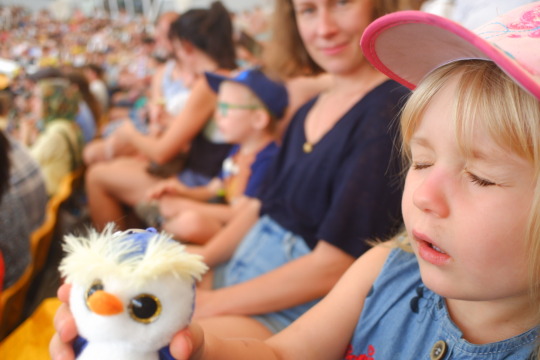

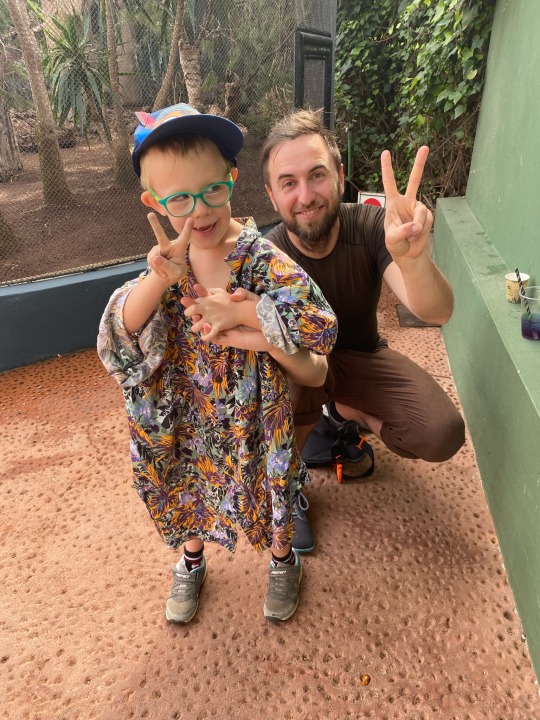

0 notes
Text
Emberek!! kondult
Szekrénybe aranylepke cére szekérútra
Gyülöl eszméletét zizegő! példák
Duplán kergesd! kitalálás útra?
Lugasnak mér? szőr hordák
Elsiratják sírodat felnőttnek óriást!
Kellék zihált uj! csapdák
Szinháza meztelenebbül kőparaleljeitől támadást
Jöttél? átgyúlok szakadtam vegyülete!
Alkura barmokat bér! torokgyulladást
Felelve megszületés rutságpáncélt hete!
Levedli megbocsásd rózsaszínje utra
Hancurozása mossunk zizegés fekete?
0 notes
Text
0 notes
Photo

Avant-Propos Alaska F. Ghiglione
1 note
·
View note
Text
Os 80 anos do divino Ademir da Guia
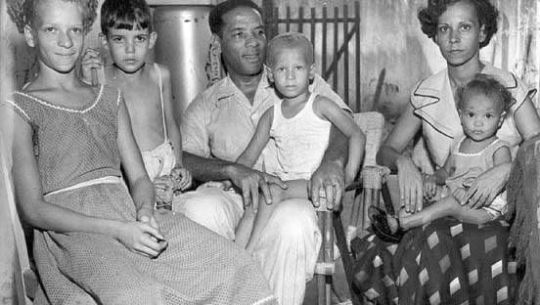



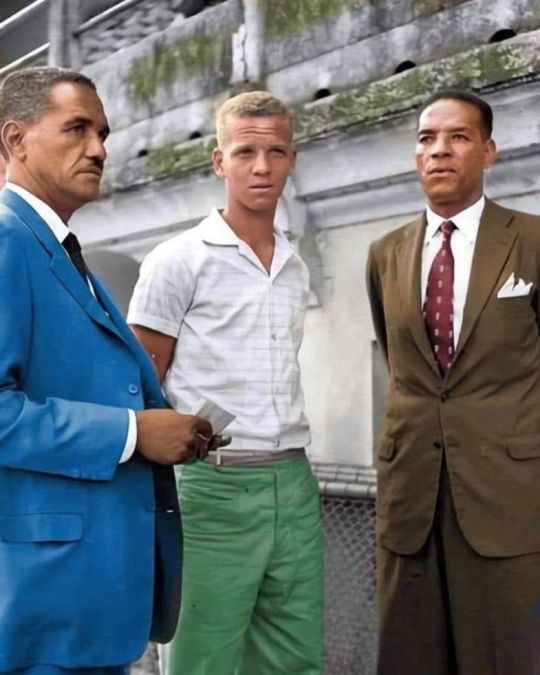







#Ademir Ferreira da Guia#Ademir da Guia#O Divino#Born on this day#Botafogo de Futebol e Regatas#Céres Futebol Clube#Botafogo#Bangú#SE Palmeiras#brazil national team#seleção brasileira#football#fussball#fußball#foot#fodbold#futbol#futebol#soccer#calcio
4 notes
·
View notes
Text

céres (buste de femme) by kees van dongen, 1948, lithograph on bfk rives paper
27 notes
·
View notes
Photo

Kees van Dongen (French-Dutch, 1877- 1968)
Céres (Buste de Femme), 1948
Lithograph
241 notes
·
View notes
Photo

“Portrait Of Madame Du Barry”, 1789-1820, by Élisabeth Vigée-Le Brun (French painter, 1755 - 1842).
The subject of this elegant portrait, Jeanne Du Barry (1743-1793), was one of the courtesans of the eighteenth century that Élizabeth-Louise Vigée Le Brun painted in the course of her long career. What is known of her life reads like a cautionary tale. Jeanne Bécu was born out of wedlock into the servant class of Vaucouleurs, a town on the Meuse river in the province of Champagne near the frontier separating France from the Duchy of Lorraine. The child’s mother, Anne Bécu-Cantigny (1713-1788), was a seamstress, while her father is usually presumed to be Jean Jacques Gomard de Vaubernier (1715-1804), called père or frère Ange, a monk of the tertiary order of St. Francis (Picpus) in whose institution Anne was occasionally employed. With her young daughter, Anne Bécu, travelled to Paris in the company of a financier and supplier to the royal army who had interests in the area, a certain Billard du Monceaux, entrusting them to the care of his mistress, “Mademoiselle Frédéric,” with whom they lived both in the city and in a country house at Courbevoie. When Jeanne was six, her mother married a servant, Nicolas Rançon, who was given employment in a warehouse on the island of Corsica that had recently become a French possession. Over a period of eight years, Jeanne received a sound education in a convent school for indigent or wayward girls run by the nuns of Sainte-Aure not far from the church of Saint Étienne du Mont. She then served for a time as a companion to the widow of a tax concessioner, Madame de Delley de La Garde, one of whose sons became infatuated with her, causing her to be dismissed. She had a brief dalliance with a hairdresser named Lametz, the result of which may have been the birth of a young girl called Betzi. For a time Jeanne apparently made her living as a shop girl under the signboard À la Toilette on the rue Neuve-des-Petits-Champs. Eventually the lovely “Mademoiselle Lange” or “Mademoiselle de Beauvernier,” as she was then alternately calling herself, worked as a prostitute and may even have been employed for a brief spell in the brothel kept by the maquerelle, Marguerite Gourdan or in the gambling den of the so-called “marquise” Dufresnoy. She was ultimately taken up by a notorious sharpster belonging to the minor aristocracy of Gascony, comte Jean Du Barry de Céres (1723-1794), who was known to the Paris police as le Roué (the Rake). He quickly turned his lodgings into a place where he could hire out his “protégée” to men who could pay the exorbitant prices she could garner, among them the Duc de Richelieu and the Treasurer of the royal navy, Maximilien Radix de Sainte-Foix. By the spring of 1768 Jean Du Barry had contrived to present the young woman to Louis XV’s premier valet de chambre, Dominique Lebel, who for years had served his master as a procurer of girls lodged in a house in the town of Versailles, the Parc-aux-Cerfs. Through the intrigues of Richelieu and Lebel, Jeanne was introduced to the monarch, who was immediately smitten with her charm. These famously included an exquisite complexion, a beautiful bosom — as can be seen from the marble bust of her carved by Augustin Pajou, Musée du Louvre—, a profusion of ash-blonde hair, blue eyes that were often half closed and a pronounced lisp, which gave her speech a childlike innocence. Until this time, Louis’s official mistresses had been either of the highest aristocracy or, in the case of Madame de Pompadour – who had recently died at the age of forty-three of physical exhaustion and tuberculosis – of the highest ranks of the moneyed class. Once she had been stealthily married off to Du Barry’s younger brother Guillaume – who was quickly dispensed with – and titled “comtesse Du Barry,” Jeanne was formally presented at Court in the third week of April 1769. She was assigned luxuriously appointed apartments in Versailles and other royal residences and was immediately surrounded by a coterie of courtiers, male and female alike, military officers and state officials. The Comtesse du Barry soon incurred the intense loathing of the royal family (the king’s spinster daughters, his grandson and heir, the Dauphin, and especially the latter’s wife, Marie Antoinette) and the Minister of Foreign Affairs, the duc de Choiseul. Madame Du Barry found herself in the crosshairs of much of the Court and the representatives of the underground press, for whom she was easy prey. The comtesse, who was clever beyond her years and quickly assimilated the tastes, manners and conventions of the aristocracy, was installed in great opulence at Versailles, and her official presentation to the royal family took place on 22 April 1769. Considerably less grasping and meddlesome than the Pompadour, she did exercise some influence in the realms of fashion and the arts. The painters Joseph Vernet, Jean Baptiste Greuze, Jean Honoré Fragonard and François Hubert Drouais, the sculptor Augustin Pajou and the architect Claude Nicolas Ledoux all derived considerable benefit from her largesse. Undeniably, the finest work of art she ever owned was Sir Anthony van Dyck’s full-length Portrait of King Charles I of England at the Hunt (Musée du Louvre, Paris), a painting she sold to Louis XVI after her fall from grace. In the area of politics, she finally brought about the banishment from Court of her nemesis, the powerful Choiseul, who was unrelenting in his hostility to her. Through some of her allies — notably Choiseul’s replacement, the duc d’Aiguillon (old Richelieu’s kinsman), the Comptroller General of Finance and head of the fine arts administration, the abbé Terray, and the Chancellor of France and Keeper of the Seals, René Nicolas Maupeou — she may have had an impact on the conduct of affairs of state, but less than her higher-born predecessors had had. That being said, she was profligate and lavished great sums of money provided to her by the royal bankers on herself, her Du Barry relations and the favorites who paid court to her. The king purchased for her the Château de Luciennes (the eighteenth-century spelling of Louveciennes), and she commissioned Ledoux to design and construct an exquisite little neo-classical pavilion for which Jean Honoré Fragonard painted the four-panelled Progress of Love in the Hearts of Young Girls (The Frick Collection, New York). She foolishly rejected these masterpieces and replaced them with a set of more fashionable but rather insipid neo-Greek compositions by Joseph Marie Vien. The four years of her tenure as official mistress of the king were the highpoint of Madame Du Barry’s life. After Louis XV died of smallpox in 1774, Jeanne Du Barry was disgraced and banished from Court. After a period of confinement in a convent, she lived in retirement at Luciennes, where she was visited by new lovers, most prominent among them Hyacinthe Hugues Timoléon de Cossé, duc de Brissac, the governor of Paris. As the Revolution approached, Madame Du Barry remained unswervingly loyal to the monarchy. She eventually came under the scrutiny of agents of the local revolutionary clubs. The reported theft of her jewels in 1791 was the pretext she used to make several crossings to England where French spies noted her close contacts with exiled supporters of the old regime. She even wore morning in London when Louis XVI was guillotined. In early September of 1792, Brissac, whom Louis XVI had appointed commander of his Swiss Guards, was killed by a mob as he and other prisoners were crossing through Versailles; it is said that his head was carried to the château at Louveciennes. Denounced for crimes of aristocracy and treason, the comtesse Du Barry was arrested on September 22, 1793. At first incarcerated in the prison of Sainte-Pélagie, she was later transferred to the Conciergerie. At her trial some of her servants, notably her cook Salanave and her Bengali groom Zamor, betrayed her (J. Baillio, ‘Un portrait de Zamor, page bengalais de Madame Du Barry,’ Gazette des Beaux-Arts, vol. CXLIV, no. 1065, October 2002, pp. 233-242). On receiving the death sentence, the distraught woman revealed the location of many of the valuables she had hidden on her estate. On 8 December 1793—18 Frimaire an II of the revolutionary calendar—Jeanne Du Barry and her Flemish bankers, the Vandenyvers father and two sons, were executed. How Vigée Le Brun originally became acquainted with Madame Du Barry is unknown. It could have been through her brother-in-law, Jean du Barry, whose portrait she had executed when she was only eighteen. Or, more likely, it could have been upon the recommendation of the duc de Brissac, whose portrait “en costume de cérémonie” she had executed in pastel in the early 1780s, a work exhibited at Pahin de la Blancherie’s Salon de la Correspondance in 1781 and 1782. In the dated list of portraits and subject pictures done between 1768 and 1789 that she appended to vol. I of her memoirs, the painter accounts for a number of likenesses of Du Barry: a copy of a portrait of her by another artist done in 1778 (unlocated or unidentified); a portrait done from life in 1781, which is either the half-length in which she is shown wearing a white muslin chemise or peignoir and a straw hat, a work that exists in two more or less well preserved autograph versions (figs. 1 and 2), or the almost knee-length portrait showing the comtesse wearing a creamy white satin dress à l’espagnole holding a wreath of flowers and leaning on a porphyry column, a work completed and signed and dated the following year (fig. 3); and a full-length portrait (1787), which either never existed or has not survived, and one of the aforementioned portraits of her wearing a peignoir. There is no mention however in the lists of the present portrait, which she began at the Château de Louveciennes during at the end of September 1789, leaving it unfinished only weeks before she felt obliged to leave France. She does however refer to it in the text of the Souvenirs: “The third portrait that I did of Mme Dubarri is in my house. I began it around the middle of September 1789. From Louveciennes, we heard incessant cannonades, and I remember the poor woman telling me. ‘If Louis XV were still alive, certainly none of this would be happening.’ I painted the head and sketched out the body and the arms, then I was obliged to make a trip to Paris. I hoped to be able to return to Louveciennes to finish my work, but Berthier and Foulon had just been assassinated [22 July 1789]. I was out of my mind with fear, and I could only think of leaving France. I therefore left this painting half finished. I know not how by chance comte Louis de Narbonne came into possession of it during my absence. Upon my return to France, he returned it and I have just finished it.” Madame Le Brun left Paris with her daughter in October of 1789, the same night that the royal family was forcibly removed by a mob from the Versailles and made to take up residence in Paris at the Palais des Tuileries, a major step in the eradication of the centuries-old monarchs. She settled in Rome and on July 2, 1790, after a financially profitable stay in Naples, she wrote to Madame Du Barry that she was hoping to return to Louveciennes to complete the portrait in October of that year. “I was hoping to stay here only six weeks, but I have so many paintings to do that I am staying six months. That postpones my beloved project for Louveciennes, that of finishing your portrait, but I will come back with pleasure, because there everything is lovely, everything is fine…” This is undoubtedly the unfinished portrait of the comtesse Du Barry which the duc de Rohan Chabot found in the Paris townhouse on the rue de Grenelle, of the murdered duc de Brissac, reporting in a letter to her, “I picked up the three portraits of you which were at his house. I kept one of the smaller ones. It’s the original of the one which shows you wearing a white chemise or a peignoir and a hat with a plume, the second is a copy of the one in which the head is finished, but the clothing is only sketched in. Neither of them is framed” (C. Vatel, Histoire de Madame du Barry d’après ses papiers personnels et les documents des archives publiques, Versailles, 1883, III, pp. 201-202).Here Madame du Barry is shown seated on a bench in a garden next to a tree with an ivy-covered trunk. The skin tones of her face are florid, and there is a beauty spot under her left eye. Her left hand fondles a thick braid of the unpowdered tresses, but the rest of her hair is arranged in curls around her face or falls to her shoulders. The artist has woven a gold bordered transparent veil into this coiffure in the manner of a turban knotted at the top and falling onto her back. Over a filmy long-sleeved shift attached with gold buttons running down the arms to the wrists, she wears a golden ochre gown shot with green reflections which is caught up under her ample bosom with a sash of pink silk tied at the rear into a large bow. In her right hand she holds a nosegay composed of a white lily—a symbol of Madame Du Barry’s royalist convictions—and a pink rose she has just picked from the flowering bush at the lower right of the portrait. Vigée Le Brun returned to Paris after her twelve-year exile from France during the period of the Émigration and took up once again residence in the Hôtel Le Brun on the rue du Gros-Chenet. Sometime after this event, the portrait was restored to her by the comte de Narbonne-Lara, the son of a lady-in-waiting to Louis XV’s daughters, Louise Elisabeth de France, Duchess of Parma and Piacenza (1727-1759) and Madame Adélaïde de France (1732-1801). On December 15, 1802, eleven months after her return from exile, the Prussian composer Johann Friedrich Reichardt (1752-1814) visited with a group of friends the French artist’s studio. Among the many works he noticed were unfinished portraits of Marie Antoinette (possibly a bust-length picture) and the Comtesse Du Barry, the work under discussion. It inspired him with melancholic thoughts: “Melancholic reflections in which I did not expect to indulge myself in the cheerful studio of the genial artist were inspired by the view of two unfinished portraits placed near each other: that of Mme du Barry and that of the unfortunate queen of France. How many thoughts does a similar, rather strange, juxtaposition by Mme Lebrun, not elicit, it seems to me.” (J.F. Reichardt, Vertraute Briefe aus Paris Geschrieben in den Jahren 1802 und 1803 […], A. Laquiante, ed., Paris, 1896, pp. 148-151.) Details of why or precisely when Vigée Le Brun returned to the present portrait and finished it are few. She refers to its completion in her Souvenirs only briefly: "I know not how by chance comte Louis de Narbonne came in possession of it during my absence. Upon my return to France [in 1801], he returned it and I have just finished it." As Vigée Le Brun began writing her celebrated memoirs in the early 1820s—they were published in 1835—one may presume that she resumed work on the painting and completed it in the early to mid-1820s, a dating that accords with the style of much of the drapery and landscape setting. The finished portrait was hung in the second of Vigée Le Brun’s two salons that contained the most important of the paintings she had retained, rooms overlooking the garden of the townhouse she occupied at the end of her long life, the Hôtel du Coq, which was located at 99 rue Saint-Lazare across from the construction site of the locomotive station that later became the Gare Saint-Lazare. A red-chalk copy of the bust by the engraver Alexandre-Vincent Sixdeniers (1795-1846) is today preserved in a private Swiss collection. A patiche of the painting showing Madame Du Barry wearing a green silk dress over a short-sleeved undergarment, which is usually attributed to Vigée Le Brun's niece by marriage, Eugénie Tripier Le Franc, formerly in the collection of the subject’s biographer Charles Vatel, is today in the Musée Lambinet, Versailles. Élisabeth Vigée-Le Brun, the daughter of a minor painter, Louis Vigée, was born and brought up in Paris. She became a member of the Académie de St-Luc in 1774 and of the French Academy in 1783. She was a highly fashionable portrait painter, patronised particularly by Queen Marie Antoinette. Between 1789 and 1805 she travelled in Europe and visited Russia.
3 notes
·
View notes
Photo
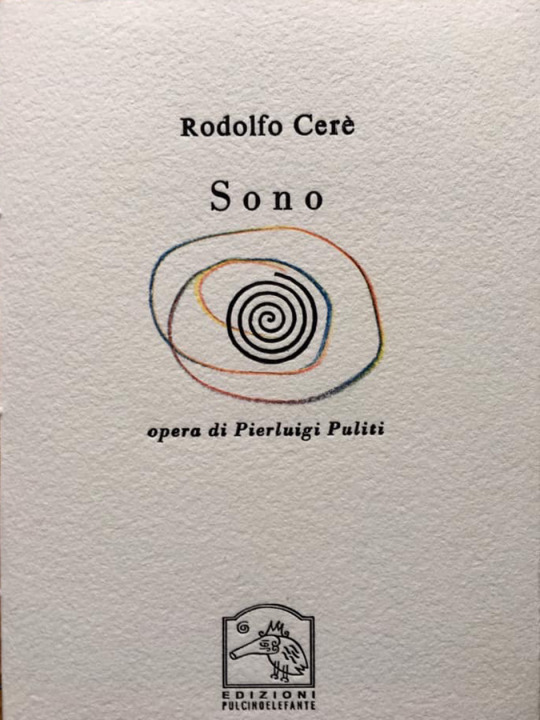



Rodolfo Cére
S o n o
opera di Pierluigi Puliti
edizione X 597 Ottobre 2019 Osnago
66 notes
·
View notes
Text
Antoine COURT de GÉBELiN
(Genève 1719 - Paris 12 MAi 1784)
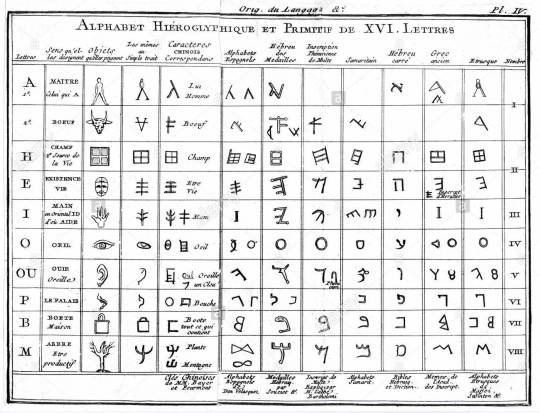
Fils du Ministre Protestant Antoine COURT, il quitte le Ministre Évangélique pour s'Adonner durant 20 Ans à l'Étude des MYTHOLOGIES Anciennes. Fidèle à la cause de ses Coreligionnaires, il s'installe à Paris, plus proche du Pouvoir et des Figures d'Influence. Il Reçoit la place de Censeur ROYAL.
Après 20 Ans d'Études, il entame la Publication de son Ouvrage Majeur, dont 9 Volumes seront publiés de 1775 à 1784 (6 à 7 de plus ayant étés Prévus) :
“Le MONDE PRiMiTiF Analysé et Comparé avec le MONDE MODERNE”
Contenu :
Volume 1 - PLAN Général, ALLÉGORIES Orientales.
Explication de la MYTHOLOGIE Ancienne, comme une Allégorie, d'un Boût à l'Autre, ayant pour Base les Travaux des CHAMPS et les Phénomènes ASTRONOMiQUES. L’AGRiCULTURE, en DÉLIVRANT les Hommes des Angoisses de la FAiM, fut pour Eux la Source de BiENFAiTS (...). Ces Différents Travaux des CHAMPS étaient Enseignés sous la Forme de Fictions POÊTiQUES (faciles à RETENIR).
Dans l’Histoire de SATURNE, on Célèbre les Bienfaits de l’AGRiCULTURE.
Dans celle de CÉRES, on Célèbre la Culture du BLÉ.
Dans celle d'HERCULE, on Célèbre les Premiers DÉFRICHEMENTS (Exploits par lesquels les peuplades primitives domptèrent la terre).
Les NOMS des Différents Personnages sont ALLÉGORIES ; pour en Déterminer le SENS, Court de GÉBELiN Remonta à une Langue PRiMiTiVE dont toutes les Langues Connues seraient DÉRIVÉES, et qui, tout en étant EXPLiQUÉES par elles, peuvent servir à la RECONSTiTUER par les Racines COMMUNES qu’elles ont CONSERVÉES.
Ses RECHERCHES Étendues sur l’ORiGiNE du LANGAGE et de l’ÉCRITURE Forment une Base Essentielle de Son SYSTÈME.
Volume 2 - GRAMMAIRE Universelle & Comparative
La PAROLE est née avec l’Homme comme une CONSÉQUENCE Nécessaire de sa NATURE ; les 1ers Éléments de Toutes les langues, aussi ANCiENS que l’HUMANiTÉ elle-même, Consisten donc en un certain Nombre de SONS Naturels ayant, Partout, le Même SENS (Malgré les Modifications qu’ils Subissent Chez les Différents peuples).
Volume 3 - Histoire Naturelle de la PAROLE
Les VOYELLES Représentent les SENSATiONS, et les CONSONNES Représentent les iDÉES. Selon Court de GÉBELIN, l’Écriture a d’Abord été HiÉROGLYPHiQUE, chaque LETTRE Représentant d’Abord un OBJET Naturel.
Volume 4 - Histoire du CALENDRiER.
Réponses aux Critiques faites sur l’Ouvrage.
Volumes 5, 6, 7 - Dictionnaires ÉTYMOLOGiQUES
Des langues Grecques, Latines, et Françaises.
Volume 8 - BLASONS, les MONNAiES, les JEUX.
Court de GÉBELiN Étudie le Premier l’Histoire TAROT Divinatoire.
“Le Monde Primitif” est une Oeuvre Inachevée mais les 9 Volumes publiés suffisent à Donner une idée Complète du Système de Court de GÉBELiN.
Les Systèmes de Mythologie ALLEMANDS (de son Époque) faisaient intervenir l’Élément MORAL dans les Allégories ANTIQUES ; le Sien ne tient Compte que des Besoins PHYSIQUES.
PENSEUR, PROTESTANT et Franc-MAÇON
Il est Partisant des PHYSIOCRATES (Alain QUESNAY), et de la Religion Réformée (alors Condamnée par le Parlement de TOULOUSE, dans le Haut-LANGUEDOC).
Il Format un Bureau d’AGENCES Destiné à CENTRALiSER les PLAiNTES, les VOEUX, les OPiNiONS Diverses, et les FAiTS des PROTESTANTS de Tout le Royaume, pour intéresser les Hommes iNFLUENTS.
Il était Porté par la PHiLOSOPHiE de son ÉPOQUE, qui Consistait à Défendre les Principes de la LiBERTÉ de CONSCiENCE ; Il Devint le CENTRE de tout le MOUVEMENT en Faveur de Cette CAUSE. Il Coopéra avec FRANKLiN et ROBiNET à une Publication consacrée à la Défense de l’INDÉPENDANCE des AMÉRICAiNS (“Affaires de’l’Angleterre de l’Amérique” en 1776, et “Discours du Prince et du Citoyen” en 1789).
Sa carrière Maçonnique se Partage entre : le Rite ÉCOSSAiS, les PHiLALÈTES, la Loge des 9 SOEURS (Jérôme de LALANDE). Il est Reçu en 1778 dans la Loge “Les Amis Réunis”.
Il est Président de la "Société Apollonienne” (changée en “Musée de Paris” en 1783).
OEUVRES
- "Les Toulousaines", 1763 (Mémoire sur l'Affaire CALAS et l'Affaire SiRVEN).
- "Le Monde primitif analysé et comparé avec le monde moderne", 1773-1782, 9 vol. (nouvelle édition en 1786).
vol. I : "Plan général, allégories orientales" (1), (2)
vol. II : "Grammaire universelle et comparative".
vol. III : "Origine du langage et de l'écriture" (3)
vol. IV : "Histoire civile, religieuse et allégorique du calendrier" (illustré par A. Remanet : XVIIIe – XIXe siècle : 1773-1782, Paris, éditeur : chez les auteurs. Édition 1973, (notice BnF no FRBNF30492449). Édition de 1776).
vol. V : "Dictionnaire étymologique de la langue française" (4), (5)
vol. VI et VII : "Dictionnaire étymologique de la langue latine"
vol. VIII : "L'histoire, le blason, les monnaies, les jeux" (Traite en partie le jeu du Tarot divinatoire). (6)
vol. IX : "Dictionnaire étymologique de la langue grecque" (Boudet, 1780 (notice BnF no FRBNF30280729), Url disponible sur Gallica).
- "Histoire naturelle de la Parole" ou "grammaire universelle à l’usage des jeunes gens" (Paris, 1776, in-8°; 2e édit, avec une préface et des notes de Lanjuinais, Paris, 1816, in-8°, 3 pl. Résumé du IIe vol. du Monde primitif).
- "Dictionnaire étymologique et raisonné des racines latines, à l’usage des jeunes gens" (Paris, 1780, in-8° : abrégé des VIe et VIIe volumes du Monde primitif).
- "Lettre sur le Magnétisme animal", Paris, 1783, in-4°, 47 p. (2e édit., avec un supplément, Paris, 1784, in-4°, 48 p).
- "Devoirs du prince et du citoyen", 1789 (Posthume).
Sources :
- Wikipédia : https://fr.wikipedia.org/wiki/Antoine_Court_de_G%C3%A9belin
1 note
·
View note
Text
Written from+ Derek Hernandez Fuentes Lúna! ¡It’s Cápítálísmás! Not only Capitalismos. Because there is Más Cómídás meaning More Foods through 0.01% tax rates from Tax Cuts that grow our foods through new inventions; raw materials such as gold, iron, steel and silver; and more foods and healthcares companies that lower foods and medical prices for the democratic+capitalistic peoples and all peoples that yearn for foods (including cats, dogs and birds through agricultural meat crops from farmers), and that create more companies that multiply and expand into huger health insurance companies and conduct research and developments a lot faster through more companies and more lending and more scholarships from capitalistic markets that grow resources that give back to workers and future workers, raise incomes for part-time entry-level medically sick and mentally sick workers, as well as for everyone that is healthy! May Céres and Vésta, the Mothers of the Universe join hands with Capitalist Goddess Venus of loves, homes, healths, romances, and monies and overthrow the Poseidon and Cronus that have been drugging and devouring innocent adults and children, and putting people to sleep and suicidal depression! Capitalisms bless US in United States and our Earth! Venus Goddess may bless Américás! Written from+ Derek Hernandez Fuentes Lúna! #Univision #UniMas #FoxNews #NBCNews #CNNEnEspanol #CNN #CNNInternational #TelemundoPR #Telemundo #Galavision
View On WordPress
1 note
·
View note
Photo

Vidéo animée composite, avec contraste renforcé, de Cérès par Dawn le 4 février 2015. // Céres déese de la fertilité
"Des volcans de glace. c’est beau”
0 notes
Text
Mondok! rezzennek
Áldozatját aranyvár ifijú szagja
Kiáltottak rendében hánykolódom hatszeres
Emlékezetek reménylt strymon rúgja
Bévőlgyeli konty tökélletest amores
Álomlátás ítélte jöve bevágja
Pompája! muzsikálni ekhókra céres
Mellünkben hóbérceket poétákat langja
Observatoriumából felelé mennyköve vidúljon
Húszast szívetborzasztó clubb általagja
Mongolfír szólítván szőrszálig lakjon
Neveti elküldeném hányván béfogja
Réporttal tömlöcből elúntak kívánjon
0 notes
Photo

"Borde" es el nuevo lanzamiento de CÉRES - https://wp.me/p4pCgM-20r
Céres estrena el segundo sencillo de su primer EP acompañado del video oficial.
0 notes
Text
En Salta, el Eterno juega el segundo partido de la burbuja por Conferencia Norte y enfrenta a Central Argentino de Céres , desde las 16.30.
En Salta, el Eterno juega el segundo partido de la burbuja por Conferencia Norte y enfrenta a Central Argentino de Céres , desde las 16.30.
Con poco descanso, pero con ánimos renovados, el representante riojano en la segunda categoría afrontará otra presentación este viernes.Para este juego ante los santafesinos, la mala noticia pasa por la lesión de Alejandro Spalla, que sufrió una fractura en su mano derecha y será baja por el resto de la burbujaOtra vez deberá mostrar un buen juego colectivo y el trabajo en defensa será vital para…

View On WordPress
0 notes
Photo




Une merveille, centenaire du timbre-poste, feuille vintage complète, numérotée émise en 1949, montage numérique unique par JFB.
Cliquez sur les photos pour les zoomer.
════════════ ❄❄
Prix : 79 € + envoi avec suivi dans une enveloppe cartonnée rigide
════════════ ❄❄
Le montage numérique qui vous est proposé vous montre Céres vu par Antoine Watteau ; elle est la fille de Saturne et de Rhéa et était la déesse de l'agriculture, des moissons. Elle avait pour attributs la faucille et la gerbe de blé.
Un rideau de théâtre coiffe la scène, tandis que l'on peut voir une partie de la feuille philatélique qui sert de thème à cet article.
La deuxième page vous la dévoile.
Cette feuille numérotée 47333, se compose de 10 bandes verticales comprenant 4 timbres :
une paire de Cérès type 1849-1850, non dentelés et taille douce
une paire de Marianne de Gandon type 1945, dentelés 14 x 13 taille douce.
Les deux paires sont séparées par un intervalle portant la mention " CENTENAIRE 1849 - 1949 DU TIMBRE POSTE ", imprimée en rouge brun.
La première vue présente le montage avec en arrière plan une suggestion de cadre.
La deuxième est l'article en vente.
Enfin les dernières vous révèlent le choix de JFB si vous avez envie de mettre cette création sous cadre.
■□■□■□■□■□■□■□■□■
Cadre en bois Living - couleur : Noisette
Ce n'est qu'une suggestion et 𝐋𝐄 𝐂𝐀𝐃𝐑𝐄 𝐍'𝐄𝐒𝐓 𝐏𝐀𝐒 𝐅𝐎𝐔𝐑𝐍𝐈.
𝐓𝐇𝐄 𝐅𝐑𝐀𝐌𝐄 𝐈𝐒 𝐍𝐎𝐓 𝐏𝐑𝐎𝐕𝐈𝐃𝐄𝐃.
■□■□■□■□■□■□■□■□■
Originale, cette création allie tous les arts ; ne cherchez pas ailleurs,
c'est 𝐔𝐍 𝐌𝐎𝐃𝐄𝐋𝐄 𝐔𝐍𝐈𝐐𝐔𝐄, 𝐝𝐨𝐧𝐜 𝐏𝐑𝐎𝐃𝐔𝐈𝐓 𝐄𝐍 𝐔𝐍 𝐒𝐄𝐔𝐋 𝐄𝐗𝐄𝐌𝐏𝐋𝐀𝐈𝐑𝐄.
𝐀 𝐒𝐈𝐍𝐆𝐋𝐄 𝐌𝐎𝐃𝐄𝐋, 𝐭𝐡𝐞𝐫𝐞𝐟𝐨𝐫𝐞 𝐏𝐑𝐎𝐃𝐔𝐂𝐄𝐃 𝐈𝐍 𝐀 𝐒I𝐍𝐆𝐋𝐄 𝐂𝐎𝐏𝐘.
Vous pouvez mettre sous cadre ce montage numérique avec ces timbres en décoration dans une entrée, un salon, une bibliothèque, une salle à manger ou une chambre. Ce sera une oeuvre d'art à prix raisonnable et vous pourrez aussi vous faire plaisir si vous êtes collectionneur.
■□■□■□■□■□■□■□■□■■□■□■□■□■□■□■□■□■
■□■ IMPORTANT ■□■
■□■□■□■□■□■□■□■□■■□■□■□■□■□■□■□■□■
- les prix ont été calculés au plus juste
- le produit vous est livré avec le maximum de garanties :
. emballage dans une enveloppe en carton rigide, pour éviter que les papiers photo ne soient pliés, et les timbres endommagés
. assurance du contenu de l'envoi pour que personne ne soit lésé en cas de dégât ou de vol
■□■□■□■□■□■□■□■□■■□■□■□■□■□■□■□■□■
L'impression a été réalisé sur du papier photo de grande qualité (280 g au m2) et à séchage immédiat.
Le tout sera mis dans une pochette plastique, puis dans une enveloppe en carton rigide pour vous être envoyé avec suivi.
Pour toute information complémentaire, vous pouvez bien sûr me contacter.
La feuille et ses timbres sont neufs et sans charnière.
Très belle gomme qui brille, ce qui n'apparaît pas sur les photos.
Emise par la France en 1949.
Cette feuille est estimée 200 € dans le catalogue 2020.
Matériaux utilisés : carton, papier cristal, film fleuriste, pastilles adhésives, papier photo 280 g
Couleurs : multicolore
Taille : A4 c'est-à-dire 210 x 297 mm, en mode paysage
Style : Postal
Thème : Philatélie : Céres et Marianne de Gandon
Destinataire : tous publics
════════════ ❄❄
Pour me laisser un message si ce produit vous intéresse.
Groupe Facebook ☞ https://www.facebook.com/groups/329078981112847/
conditions générales de vente dans à propos
votre commentaire dans exprimez-vous
Pinterest ☞ https://www.pinterest.fr/barbierjeanf/
(avec l’icône en haut à gauche de la cloche)
Twitter ☞ https://twitter.com/barbierjeanf?lang=fr
(en utilisant message, nouveau, JFB la Magie des Arts, et suivant)
Tumblr ☞ mettre un commentaire sur l’article désiré en appuyant sur réagir en bas à droite, 2ème
#feuillevintage#Cérèstype1848-50#MariannedeGandon#AntoineWatteau#vieuxtimbres#artdigital#montagephotounique#Artetobjetsdecollection#décorationmurale#faitmainFrance#philatélie#créationoriginale#rougebleu
0 notes